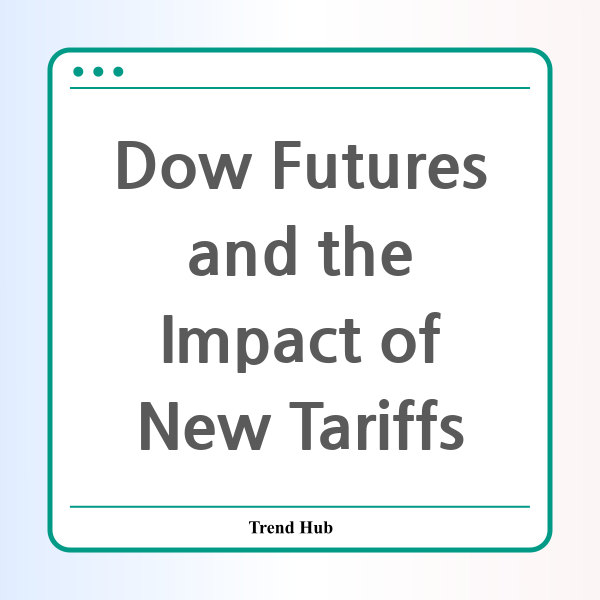* This website participates in the Amazon Affiliate Program and earns from qualifying purchases.

As we move deeper into 2024, the stock market is experiencing some turbulent times, particularly evident in the Dow futures. With significant fluctuations occurring almost daily, investors are left to navigate through a sea of uncertainty, influenced largely by trade negotiations and tariff implementations. So, what exactly is happening with Dow futures and the broader market?
Recently, a rally in U.S. stocks faced a sudden retreat as the White House announced its decision to impose an additional 84% tariff on all Chinese imports, further escalating the ongoing trade war between the United States and China. This decision has sent shockwaves across Wall Street, contributing to a decline in investor confidence and an overall downward trend in major indexes.
On Tuesday, stocks initially bounced back, driven by hopes of trade negotiations and attractive stock prices. However, that optimism quickly evaporated when White House Press Secretary Karoline Leavitt confirmed the hefty tariffs, leading to a significant sell-off. The Dow Jones Industrial Average plummeted 320 points, or 0.84%, marking its lowest close since January 2024. Additionally, the S&P 500 fell 1.57% and the Nasdaq Composite experienced a drop of 2.15%.
Table 1 below illustrates how these major indexes fared on that pivotal day:
| Index | Change (%) | Close Level |
|---|---|---|
| Dow Jones Industrial Average | -0.84 | 37,160 |
| S&P 500 | -1.57 | 4,360 |
| NASDAQ Composite | -2.15 | 13,600 |
The imposition of the tariffs has raised fears of a potential recession, as analysts predict that the ongoing trade conflicts could stifle growth not just in the U.S. but also on a global scale. Financial institutions such as Goldman Sachs and JPMorgan Chase have echoed these concerns, warning that continued escalations in the trade war might diminish consumer spending and demand for stocks.
As the dust settled, futures tied to the Dow and S&P 500 were observed struggling on Wednesday, as declines persisted following the implementation of President Trump’s tariffs. Initially, Dow futures fell over 2% but showed signs of recovery as the morning progressed. Despite some optimism following China's call for dialogue rather than immediate retaliation, uncertainty remains high among investors. These developments have led to increased volatility, with Wall Street's fear gauge, the VIX index, reflecting the rising jitters among traders.
While some in the administration exude optimism regarding the potential for favorable trade agreements, investors remain wary. The tumultuous market conditions coupled with the anticipation of first-quarter earnings reports and upcoming economic indicators, such as the Consumer Price Index, only add to the complexity of the current landscape. These economic signals are critical as they provide insights into the state of inflation and the overall health of the economy before the full force of the tariffs took effect.
In summary, as Dow futures fluctuate in response to ongoing tariff discussions and trade negotiations, investors should remain vigilant and informed. The stakes are high, and the implications of trade wars can have lasting effects on portfolios and market stability. Keeping an eye on global economic trends and corporate earnings will be key to navigating these turbulent waters.
* This website participates in the Amazon Affiliate Program and earns from qualifying purchases.